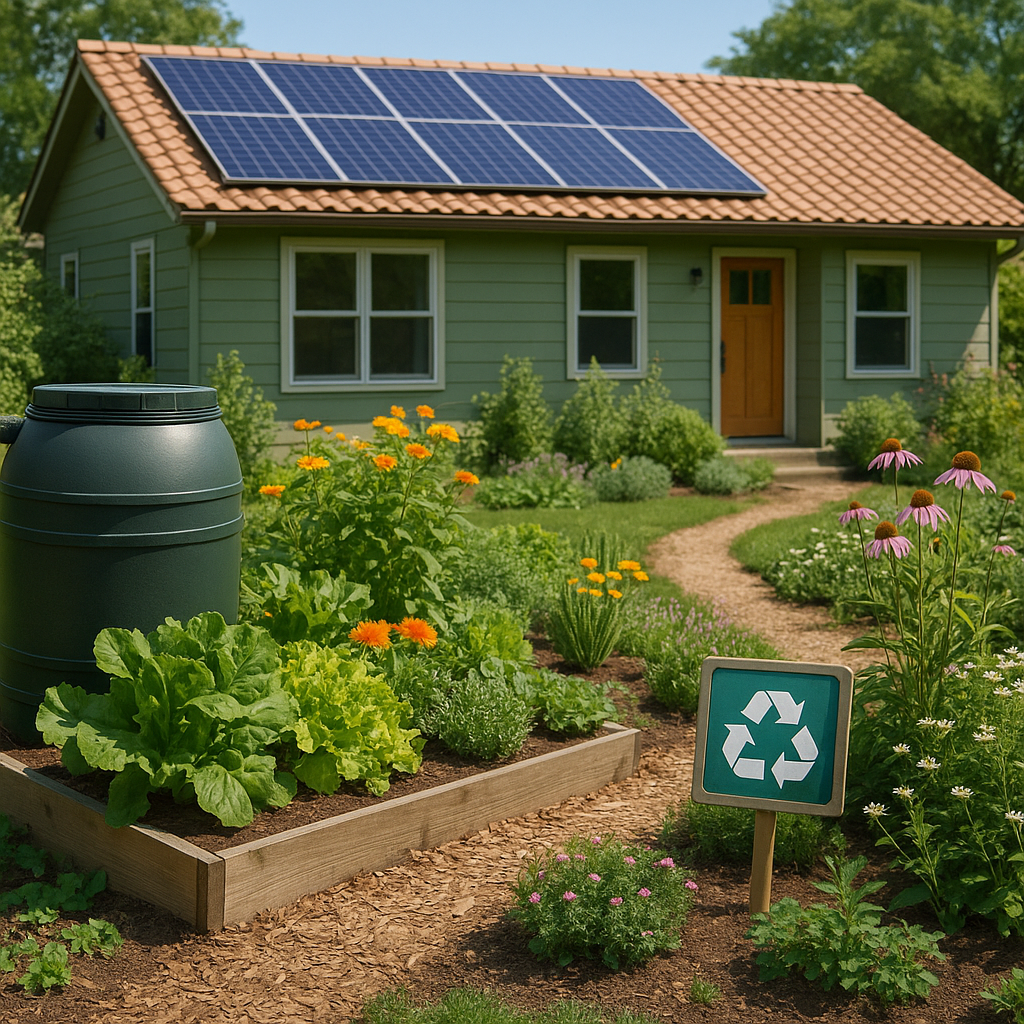This guide explores practical, impactful eco-friendly practices for your home and garden. Whether you're just starting or refining your green lifestyle, these strategies will reduce your environmental footprint while often saving you money in the long run.
1. Start with an Eco-Conscious Mindset
Before diving into tech or products, sustainability begins with daily awareness and smarter habits.
Core Principles
Reduce: Waste, energy, and consumption.
Reuse: Materials, furniture, containers.
Recycle: Properly sort, donate, and repurpose.
Regenerate: Focus on practices that restore soil, biodiversity, and ecosystems.
Being eco-friendly isn’t about perfection. It’s about consistency and intention.
2. Energy Efficiency at Home
Appliance Upgrades
Energy Star Rated appliances use up to 50% less energy.
Replace old refrigerators, washers, and HVAC systems with high-efficiency models.
Smart Home Technology
Thermostats (like Nest or Ecobee) reduce heating/cooling waste.
Smart plugs and power strips prevent phantom energy draw.
Insulation & Windows
Add attic insulation and seal gaps to maintain interior temperature.
Double or triple-glazed windows cut heat loss significantly.
Lighting
Replace incandescent bulbs with LED—longer life, 80% less energy use.
Use timers and sensors for outdoor lights.
3. Water Conservation Strategies
Indoors
Low-flow faucets, toilets, and showerheads reduce use by up to 60%.
Fix leaks—one dripping faucet can waste 3,000 gallons/year.
Dishwashers over handwashing—modern dishwashers use less water.
Outdoors
Water early in the morning to reduce evaporation.
Install drip irrigation systems instead of sprinklers.
Collect rainwater with barrels or diverters.
Xeriscaping
Design gardens with drought-tolerant plants to cut irrigation needs by 50–70%.
4. Sustainable Gardening Practices
Go Native
Native plants are adapted to local soil and climate, meaning:
Less water.
Fewer pesticides or fertilizers.
More support for native bees, birds, and butterflies.
Composting
Convert food scraps and yard waste into rich soil.
Diverts waste from landfills and reduces methane emissions.
Mulching
Use organic mulch (leaves, straw, bark) to retain moisture and suppress weeds.
Reduces watering and the need for herbicides.
No-Till Gardening
Protects soil structure and reduces carbon release.
Encourages natural worm and microbe activity.
5. Eco-Friendly Lawn Alternatives
Traditional lawns are water-hungry and chemically dependent.
Low-Impact Options
Clover lawns: Stay green, resist drought, and feed pollinators.
Groundcovers: Thyme, moss, or sedum offer texture with minimal care.
Artificial turf: Only when water bans are strict—be cautious of heat and microplastic runoff.
Mowing Smarter
Use electric or battery-powered mowers.
Leave clippings as natural fertilizer ("grasscycling").
6. Sustainable Materials for Building and Renovation
Interior Choices
Bamboo flooring: Fast-growing and renewable.
Reclaimed wood: Keeps materials out of landfills and adds character.
VOC-free paint: Improves indoor air quality.
Outdoor Projects
Recycled pavers or composite decking made from plastic waste.
Living roofs or green walls for insulation and biodiversity.
7. Waste Reduction and Circular Living
Declutter Responsibly
Donate usable items instead of tossing.
Sell or give away via apps or community swaps.
Eliminate Single-Use Plastics
Use glass or stainless steel containers.
Buy in bulk or refill at zero-waste stores.
Repair Culture
Learn basic fixes for clothes, furniture, and electronics.
Join local “Repair Cafés” or maker spaces.
8. Sustainable Outdoor Living
Eco-Friendly Furniture
Choose FSC-certified wood, recycled metal, or secondhand options.
Avoid PVC-based plastics that release toxins.
Solar Power Integration
Solar-powered lights, fountains, and heaters are clean alternatives.
Full solar systems reduce or eliminate electricity bills.
Wildlife-Friendly Design
Include bird baths, bee hotels, or butterfly plants.
Avoid pesticides and herbicides that disrupt ecosystems.
9. Community-Level Sustainability
Join a CSA (Community Supported Agriculture) or start a local garden.
Advocate for green policies in your neighborhood or HOA.
Share tools and equipment with neighbors—less waste, more connection.
10. Getting Started: A Quick Action Checklist
| Category | Action |
|---|---|
| Energy | Replace bulbs, upgrade to smart thermostat |
| Water | Install rain barrels, switch to low-flow fixtures |
| Garden | Start composting, add native plants |
| Waste | Ban single-use plastics, shop local bulk |
| Renovation | Use reclaimed or low-VOC materials |
Conclusion: Green Living Is Smart Living
Going green isn’t just about sacrifice—it’s about intentional living that’s cleaner, healthier, and often more affordable over time. With practical changes in energy, water, and waste habits, you’re not just improving your own life—you’re contributing to a global solution.
A truly eco-friendly home and garden isn’t built in a weekend. But each step you take—each efficient bulb, native plant, or compost bin—is a building block toward a smarter, cleaner future.
